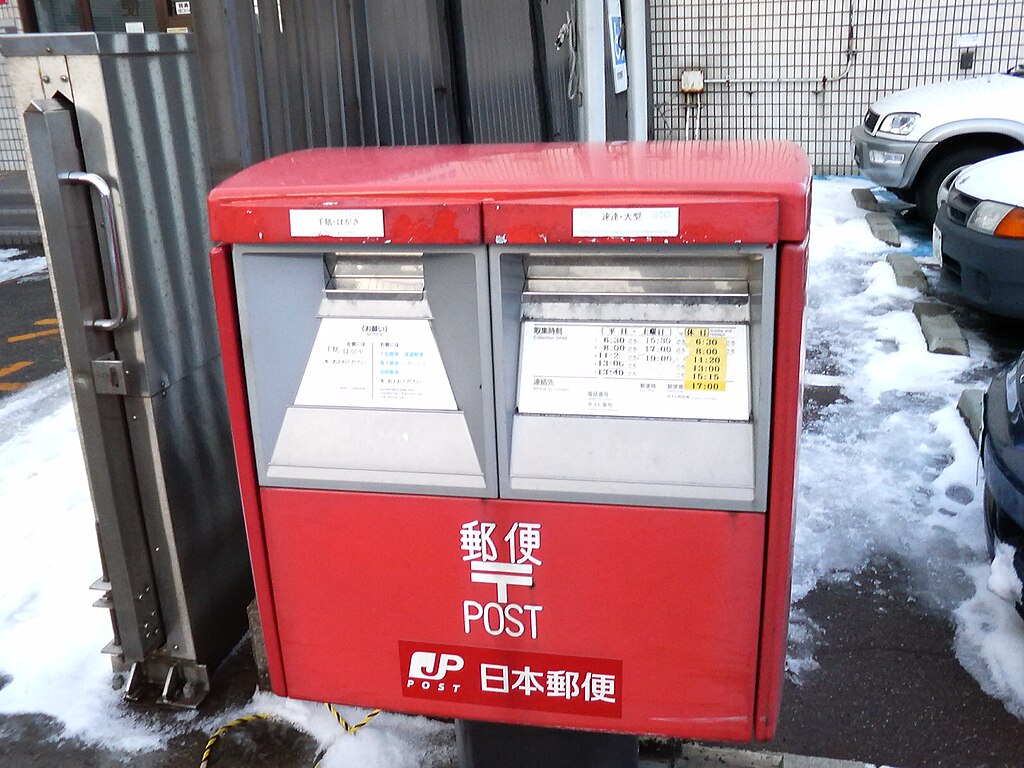Although it’s rarely necessary due to the prevalence of email and other digital communications nowadays, you may still need to mail a letter sometimes – or you may just like sending old-fashioned postcards. This may feel a bit intimidating in a foreign country, but it’s actually a simple process to send a letter in Japan.
Types of Letters
Letters fall into two categories:
- Standard-size letters are up to 23.5 cm long, up to 12 cm wide, and up to 1 cm thick. They may weigh up to 50 g.
- Nonstandard-size letters are up to 60 cm long and have a combined length, width, and height of up to 90 cm or if rolled have a combined diameter (both ends) and length of 104 cm. They may weigh up to 2 kg.
You can send letters as surface mail or airmail, with the option to use registered or insured mail for important documents. It is only possible to send correspondence, documents, magazines, CDs, and IC cards as letters; you must send merchandise (including gifts) and goods as packages.
How much you’ll pay to send a letter will depend on its weight and destination. You can check the rates and delivery dates here. There’s also an express service called sokutatsu, which costs an additional 260 yen. If you’re sending the letter through the express service, make sure to mark the envelope with a red line, either above or to the right of the postal code.
Where to Mail Your Letters
After purchasing a stamp for your letter, you can mail it in any post box. These are red and have two slots: the left is for postcards and standard-size letters; the right is for nonstandard-size letters, express deliveries, and airmail.
Japanese Addresses
The Japan Post processes mail with addresses in both English and Japanese — good news for anyone who hasn’t mastered kanji yet. It’s important to note that the layout is different for each language. In both cases, though, you should put the receiver’s name on the front and the sender’s name on the back of envelope (in the lower right-hand corner).
To address a letter in English, use a similar format to what you’re used to, like the following:
4F, Nakato Marunouchi Bldg., 3-17-6 Marunouchi, Naka-ku Nagoya, Aichi Prefecture 460-0002 Japan
In Japanese, though, the address is in reverse, ending with the recipient’s name:
〒460-0002 愛知県名古屋市中区丸の内3-17-6 ナカトウ丸の内ビル4階
Let’s break down what this address contains:
- 〒 – This symbol precedes the postal code.
- 460-0002 – This is the seven digit postal code.
- 愛知県 – This is the prefecture. The last kanji means prefecture, the remainder is the name. In this case, it is Aichi Ken.
- 名古屋市 – This is for the city. The last kanji means city, the remainder is the name. In this case, it is Nagoya City.
- 中区 – This is the ward of a city. The last kanji means ward, the remainder is the name. In this case, it is Naka Ku.
- 丸の内 – This is the city district. In this case, Marunochi.
- 3-17-6 – This is the specific location within the above areas:
- 3 – This is the cho, which defines your location within the neighborhood.
- 17 – This is the ban, further defining your position on the street.
- 6 – This is the exact location of your house or building.
- ナカトウ丸の内ビル4階 – This is the name of the building along with the floor the recipient is located on.
Depending on your specific administrative region, you may need to include other kanji like 道 (dou, in this case meaning “circuit” and only used for Hokkaido now), 府 (fu, used for the urban prefectures of Osaka and Kyoto) or 都 (to, used exclusively for Tokyo Metropolis).
Many residential buildings will have room numbers, so it would not be uncommon to see 号 (go, number) or 号室 (go-shitsu, room number) following the number as well.
Rural areas can be divided into 郡 (gun, meaning district) or even be given a subdivision of a village area using 字 (aza, meaning section). These are rarely encountered if you are in a metropolitan area.
Make sure to write the address slowly and ask a friend for help if you feel the address in question seems complicated.
By including a postal code, you’ll speed up the delivery time. If you don’t know the postal code, look up the address on a map.
Inook2011, CC BY-SA 3.0, via Wikimedia Commons

